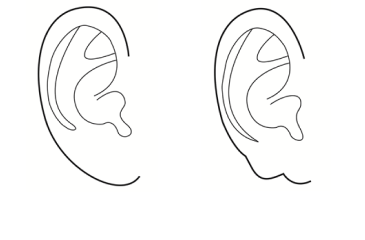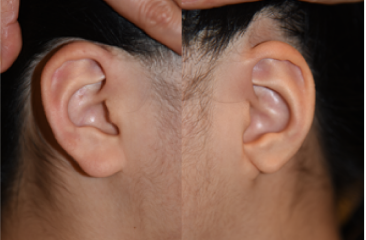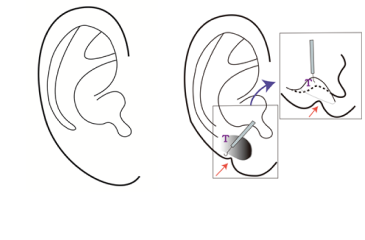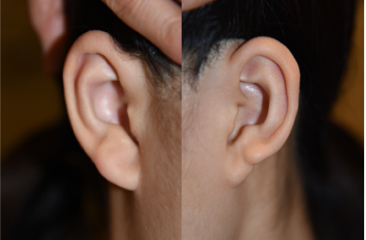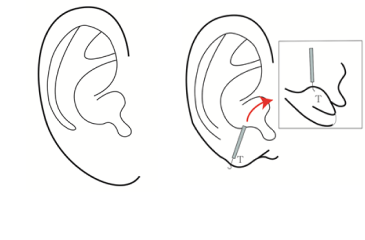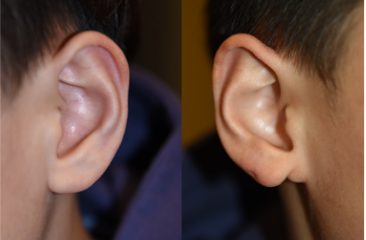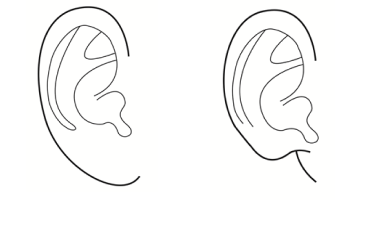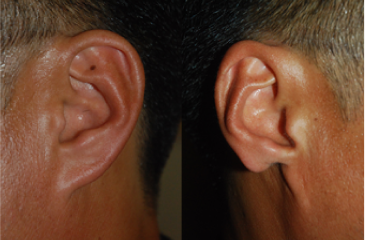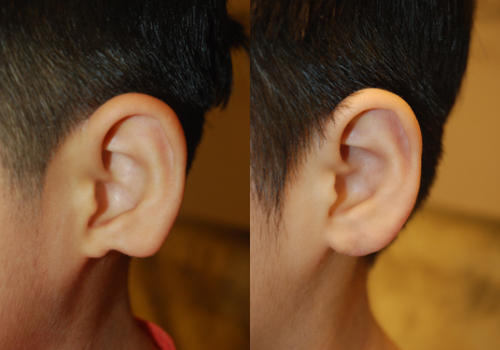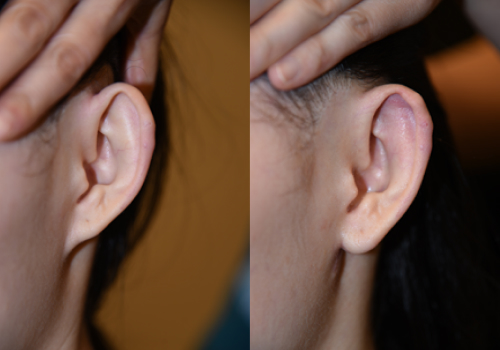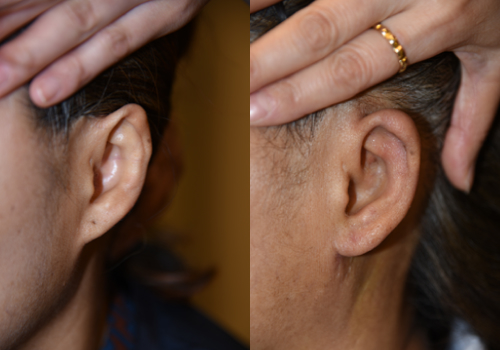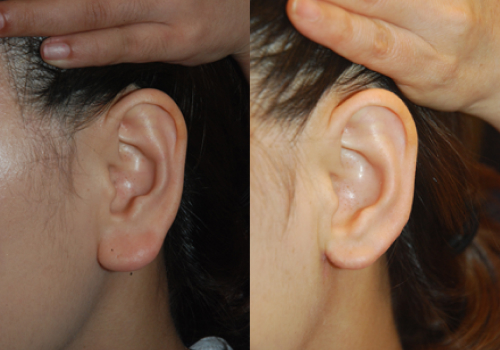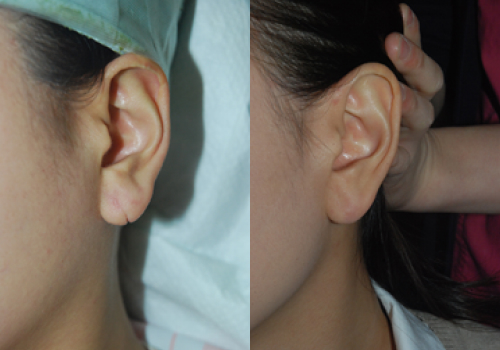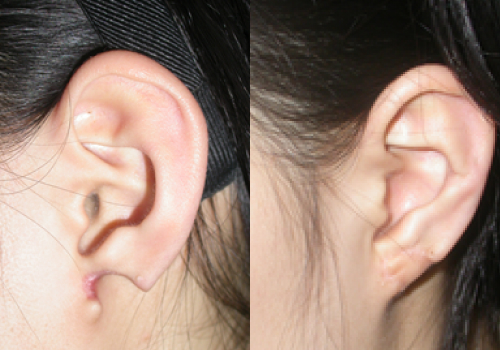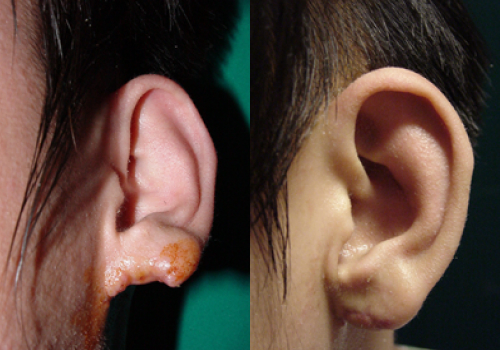Abnormal Shape
ear surgery centerEar lobe deformity
Cleft ear lobe
Cleft ear lobe is a congenital form in which
the ear lobe is split,
and appears in various shapes
depending on the degree.
In some cases,
there are only traces of clefts,
and the volume
of the ear lobe is
absolutely
insufficient in severe cases.
Depending on the severity of each,
the treatment method will be different.
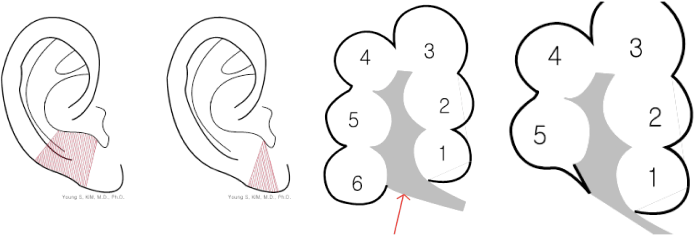
Adhered lobe and small ear lobe
Adhered lobe is a deformity in which the part where the earlobe attaches to the cheek is not round but sharply attached. It may occur congenitally or after face lift surgery. Correction depends on the degree of correction. If there is the volume of the ear lobe to some extent, it can be corrected by moving the tissue of the ear lobe itself, but if the volume is small, cartilage graft can be used along with the movement of the lobe tissue. In the case of a small earlobe, it is corrected using cartilage graft along with the movement of the ear lobe tissue.
Big ear lobe (Buddha’s ear)
If the ear lobe volume is large, it can be reduced appropriately by considering the degree you want and the harmony of the entire ear.


